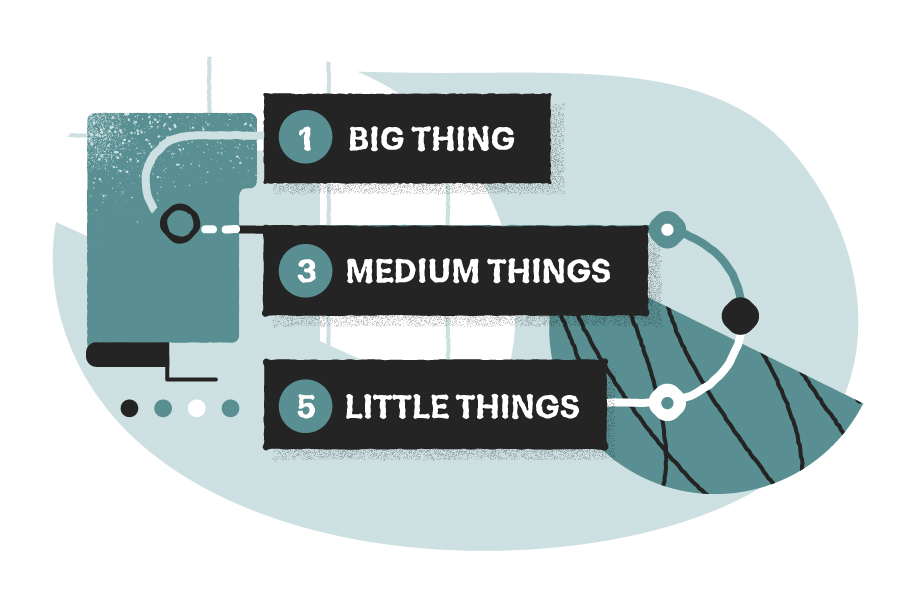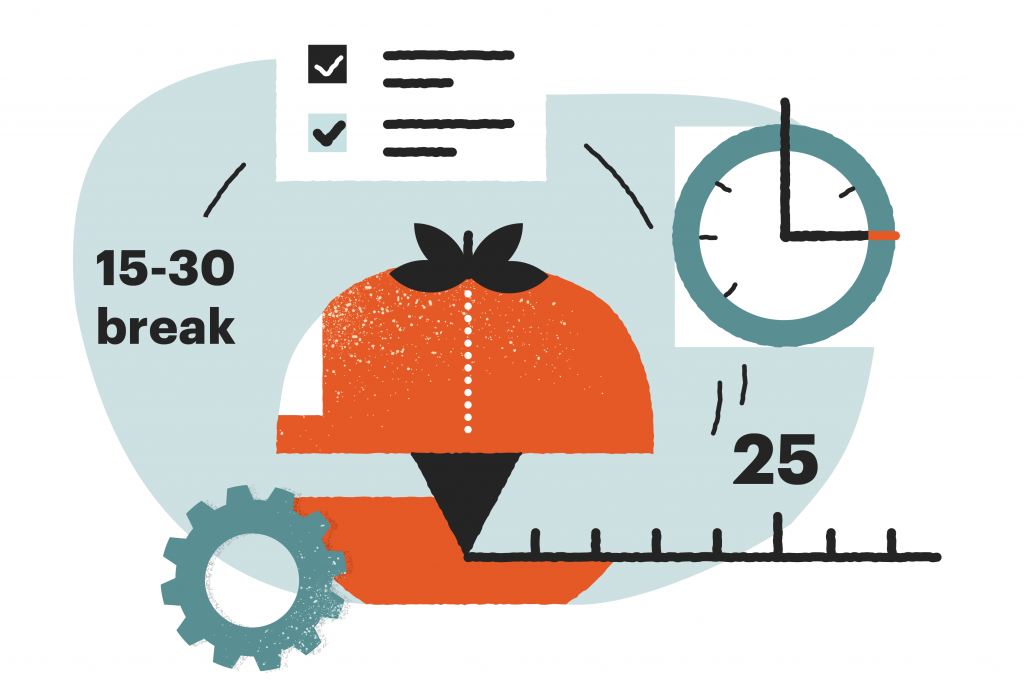The results of a recent study conducted by Gallup showed that as much as 85% of employees are not truly engaged at work. This has some significant global consequences for businesses. According to the study, approximately $7 trillion is lost globally in lost productivity each year.
The research further suggests that 67% of most workforces are “not engaged” at their workplace. From data driven digital marketing companies to multinational accounting firms, all workplaces suffer from disengaged staff.
Similar research conducted by Time Doctor, a productivity management company, estimates that businesses lose 40% of potential productivity from employees through non-work, Internet-related surfing. The same research suggests that on average, workers with an Internet connection at their job spend around 21 hours a week online while in the office.
A further analysis of this research revealed that most of the non-work-related internet time is spent using social media. Other common ways employees waste time include socializing with co-workers, taking personal calls, taking long lunch breaks, attending poorly planned virtual meetings, and checking personal emails.
Due to a lack of engagement and poor productivity, a common problem for businesses, some teams are looking for new methods to boost productivity. One of the simplest and most effective is a clever productivity rule called the 1-3-5 rule.
The 1-3-5 Rule
The 1-3-5 rule is a technique that is used to make sure that employees in your team manage to complete significant tasks in a quick and efficient manner, whilst staying engaged in their work.
The way the rule works is that instead of creating a large list of things that seems interminable for each day, individuals break their day into a more hierarchical set of tasks.
They should start with one big thing or more difficult task then move on to three medium tasks and then finally 5 small tasks. The 1-3-5 rule is about realizing that an individual can only possibly do a finite number of things each day, so they should structure their day to take on the most important tasks in descending order of size.
Obviously, this rule cannot be used for everything, and inevitably some days individuals will have their day dominated by a long meeting or be hit with several urgent tasks as the day progresses. So, it is important to stay flexible, but still try to fit to the rule as much as possible.
The reason that the 1-3-5 rule is structured in a hierarchical fashion is so that employees in your team will make good on big projects and deliverables but also manage to get to smaller tasks such as team admin or updates completed.
Combining new levels of productivity with employment recognition can also really help cultivate a culture of improved production and reward at your enterprise.
Applying The 1-3-5 Rule
Applying the 1-3-5 rule is about team members looking at their workload and making it easier to approach in a way that will ensure progress is made each week. This technique can be applied to businesses from cloud computing companies to educational institutions and more.

Listing Tasks
At the start of each week, maybe on Sunday night, individuals wanting to employ the 1-3-5 rule should create a list of all the tasks that they would like to tackle in the coming work week. Perhaps these are big projects such as completing your company’s co browsing solutions customer services. Maybe they are things that have been carried over from last week, or small tasks like accumulating admin work that would improve day to day productivity.
If your team is generally working on larger projects which take some months to complete, such as setting up a whole ecommerce website, it could be important to break these down into milestone sized tasks.
Categorizing Tasks
Once they have compiled their list, team members should classify each of the tasks considering their importance. They should have a section for major tasks, medium tasks, and minor tasks.
If individuals are struggling to group tasks into levels of importance or size, one good indicator is how long they estimate the task will take to complete. For example, a big task would usually be in the region of taking between 3 to 5 hours to complete. Small tasks may take up to about half an hour or so.
In addition, individuals should consider the level of effort which may be required for a task. For example, a large task may be setting up a new payment method for your business. A small task might be completing an admin task such as filling in meeting minutes on a spreadsheet.
If a task is relatively simple it should be designated as a small task. More complicated goals should be considered a big task, as they will require more effort.
When writing down the various tasks for the week, it is a good idea to recommend that team members make space for tasks that might be generated from meetings or other engagements. This means a team member can have a group of core tasks to be making progress with but will also have flexibility built into the system for tasks that may emerge haphazardly.
Another tip for organizing the week’s tasks is to remind your team to make tasks actionable. For example, instead of writing down “foster better relationship with client X” they might write “call client X to update them on our service’s latest offerings”. Making the task something a team member can tangibly say they have done makes completing tasks more definable.
A helpful way of making sure tasks are more definable is to employ small business tools such as project management software, which provide guides as to how to make goals less abstract.
Lastly, team members should look at the smaller items on their list and question whether they need to be done by themselves or could they be delegated to another member of the team. One day this process may be handled by AI, however, until then, it is down to the individual to organize their tasks efficiently.
Creating The Weekly To Do List
Once they have listed all the tasks for the week and sorted them in order of importance, team members can begin the actual writing of the 1-3-5 list. This is a good opportunity to encourage team building as well, by getting members of your team to write each other’s lists, cultivating more empathy, and helping them engage with the technique in a novel way.
To do this, it is advised that employees set aside a dedicated space either on a digital device or a whiteboard which can be updated and manipulated to accommodate change. Project management software is one of the easiest platforms for this type of work planning.
Other recommended platforms for these lists include apps that are specifically designed with the 1-3-5 method in mind. Like other soft technologies such as sales enablement software or digital marketing software, these task management apps improve productivity through the use of technological advancement.
Engaging With The 1-3-5 Rule
After members of your team have successfully planned out their week, day to day, the next step is to engage with the rule and follow through on assigned tasks.
Start With The Big One
The 1-3-5 rule is structured purposefully to put the most complex and difficult task first. Whether your business is overhauling its call center routing procedure or building a completely new lead proposal letter, identifying the toughest job is the easy part for each day—doing it is a different matter.
Putting these tasks at the start of the day has logical reasoning behind it, however. At the start of the day, workers have the most energy and the least distractions. This is especially true if you have an office full of people putting their biggest tasks first.
The benefit of getting the hardest task completed at the beginning of the day is that the rest of the day’s tasks seem more accomplishable. In fact, completing a big task first often galvanizes employees to take on other tasks as they feel a sense of momentum in the workplace community, which can ultimately lead to them being more productive each day.
Breaks Are Still Encouraged
Using the 1-3-5 rule doesn’t mean making sure that every available minute in the day is used productively. In fact, forcing this sort of work schedule on employees would be counterproductive. Humans are biologically incapable of focussing on a task relentlessly for hours.
In fact, the brain works optimally when it toggles between being focused and unfocused. Scientific evidence suggests that people are more effective in completing tasks if they tackle them in short bursts. This short sprint method is the foundation for a productivity system called the Pomodoro technique.
The Pomodoro Technique
The Pomodoro Technique is a time management system that asks you to alternate between focused work periods and frequent short breaks. The technique has been designed to promote sustained concentration whilst also preventing mental fatigue.
Implementing the Pomodoro technique is a simple method that can be rolled into tackling tasks within the framework of the 1-3-5 rule. It takes the form of a five-step process which is explained below:
- Step 1: Pick a task (can be big, medium, or small).
- Step 2: Set a 25-minute timer.
- Step 3: Work on that task until the timer goes off.
- Step 4: Take a 5-minute break.
- Step 5: For every four tasks or “Pomodoros”, take a longer 15-30-minute break.

Although the 25-minute focus window might be a good place to start for your team, this does not mean that it should be cast in stone. If team members are finding that this time period is too long or that they could do more, it is important they can adjust to make the method work for them.
The important message to take home is that the completion of tasks needs to be segmented into smaller chunks of high focus.
The method really encapsulates Socrates’ maxim: “A journey of a thousand miles begins with a single step”. As with the 1-3-5 rule, there are also apps that help you implement the Pomodoro method which can be installed on team members’ computers or mobile devices.
If you are going to take some time to rethink your staff’s productivity methods, it might be prudent in the meantime to make sure that you are managing customer expectations while you go through this transitional period.
Practicing Deep Work
Another technique that can help workers engage with the 1-3-5 rule across industries such as construction or education, is called Deep Work. It was developed by Cal Newport, the distinguished Associate Professor in the Department of Computer Science at Georgetown University.
The technique revolves around engaging with a more productive and focussed state which helps people complete tasks more efficiently.
Achieving this focussed state involves a range of methods. Some of the most effective are briefly explained below:
- Distance from social media: Newport explains that social media overall is actually a disruptive force of the day to day work of people and helps little with actually completing useful tasks.
- Enforce strict periods of time to work: Like the Pomodoro technique, cultivating a deep work state can be achieved by setting aside periods of intense focus which are to be without distraction.
- Use commutes, exercise periods, and other repetitive tasks to think about solutions to problems: Rather than using this time to completely zone out of any sort of focus, it could instead be used to ponder possible creative solutions to various problems that employees are confronted with in completing a task.
Final Thoughts
Implementing the 1-3-5 method at your business in conjunction with the other methods explained in this article should help to make your workforce more productive. In addition, it should also encourage habits which should mean a long-term shift to better quality contributions from all staff members.
Hopefully, on reflective analysis using agent supervisor tools or by statistical analysis, you should see an improvement in the main KPIs that you focus on for your business’s barometer of success. These could be indicators such as an improved level of customer service or more closed deals per month.


